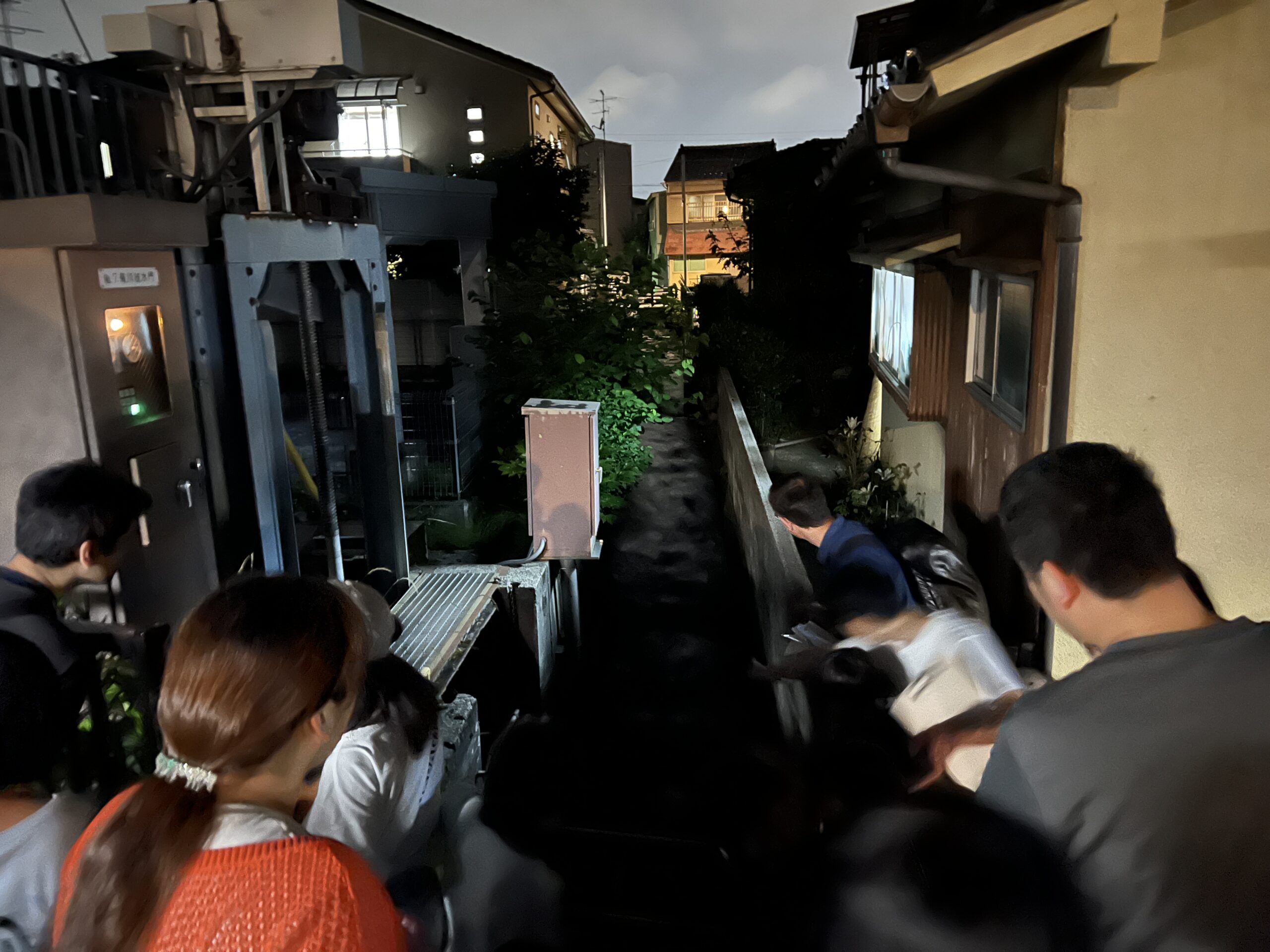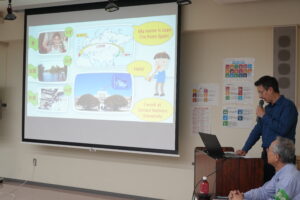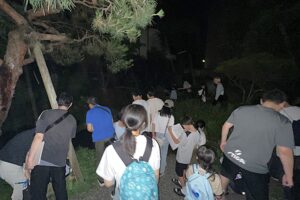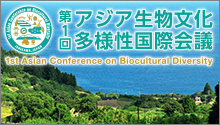On June 27, 2025, the United Nations University Institute for the Advanced Study of Sustainability (UNU-IAS OUIK) conducted a citizen-participatory firefly survey in the Kikugawa area of Kanazawa City. This activity was part of OUIK’s SUN Project (Sustainable Urban Nature Project) and was co-hosted with the Kikugawa Community Center.
Prior to the survey, Mr. Mitsuhide Shinmura (Chairman of the Kanazawa Firefly Society, Secretary-General of the Ishikawa Firefly Society), gave a lecture. Drawing on his many years of experience in firefly conservation in Kanazawa, he explained in detail about the ecology of fireflies, the conditions of their habitats, and the importance of community-based conservation activities. He mentioned, “Fireflies symbolize the richness of urban nature. Water channels and gardens remaining in the community support the habitats of fireflies.”
Following his talk, Researcher Juan from OUIK explained the significance of “biodiversity” and “biocultural diversity” in urban environments. He introduced how familiar natural settings like water channels and gardens in Kanazawa are deeply connected to cultural practices, emphasizing that protecting and nurturing such urban nature contributes to regional sustainability.
After sunset, participants observed fireflies while walking along the Kuratsuki water canal and around garden ponds, with a map in hand. Fireflies were spotted near water channels and in private gardens, revealing that natural life persists even within the city. Participants recorded the number of fireflies observed at each point on survey sheets and submitted their results.
Notably, this year, fewer fireflies were observed compared to last year, likely due to climate and environmental conditions. Continued monitoring and record-keeping are necessary to track changes in the urban natural environment over time.
Through these activities, we aim to deepen understanding of biodiversity in urban areas and foster community efforts to coexist with nature.







